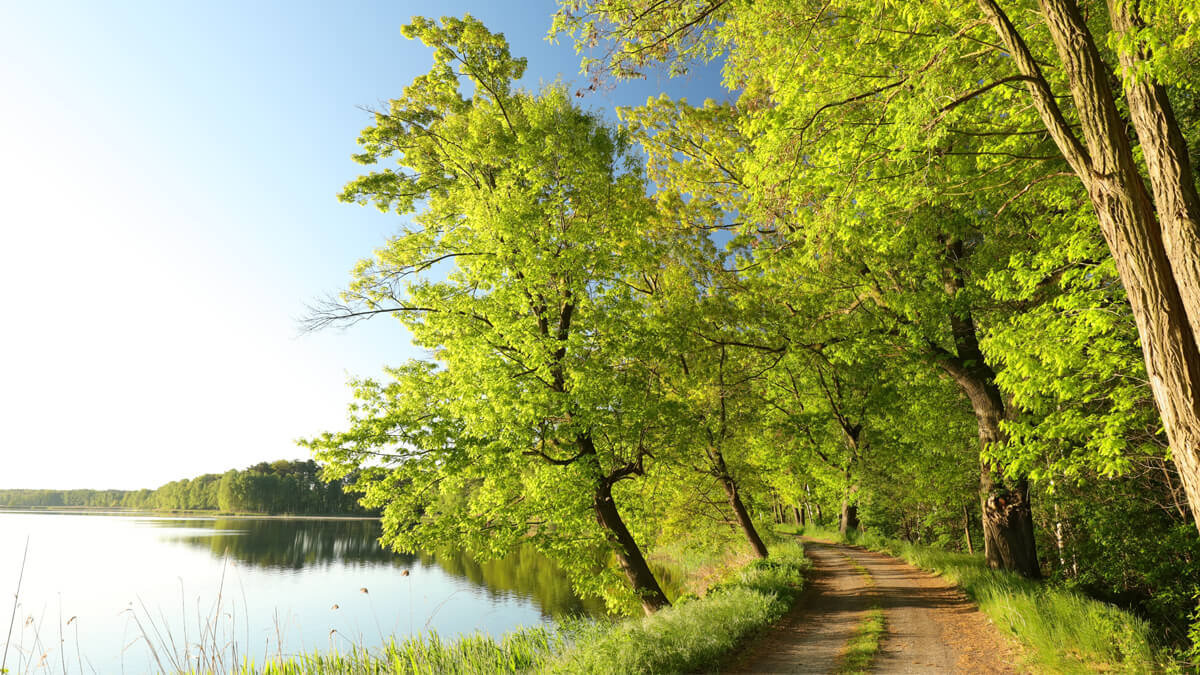Nature is healing for the soul and for the body. When we make interacting with nature a part of our weekly routine, we can share in the immune-system benefits and the accompanying healing in the colors, light and sounds of a natural space.
As part of their daily metabolic process, plants release a cloud of phytoncides, creating a protective microclimate that defends against pests and disease. When humans walk through the woods or simply coalesce with nature, they can immerse themselves in these naturally-existing immune benefits.
Exposure to nature boosts our immune system on a biological level. Research conducted by the National Institutes of Health has concluded that forest air contains a significant number of natural killer cells, a type of white blood cell that functions against stressed cells – such as those infected with a virus – and reportedly releases anti-cancer proteins.
The benefits are not limited to the forest in space or time. In a study, male subjects 35 to 56 years old who participated in a three-day, two-night visit to the forest experienced increased natural killer cell activity lasting for more than seven days after the trip. Similar results, also recorded by the National Institutes of Health, were found for female nurses 35 to 43 years old. The research discusses how visits to the forest demonstrate ongoing preventive effects on cancer cell generation and development.
Emerging research concerning the threshold needed to experience benefits suggests improvements in overall well-being is in reach. In a recent study led by the University of Exeter in England, participants who spent a total of two hours a week immersed in nature self-reported improvements that were consistent across diverse sociodemographic characteristics of participants. There was no reported difference of benefits whether the two hours were spent in a single visit or over the course of several shorter visits.
These findings encourage natural immersion as a means to attaining good health, but it’s still unknown what makes the abundant other features of a forest so spiritually and psychologically healing. Attributes of natural environments such as water features foster psychophysiological stress recovery, according to the ongoing work in psycho-evolutionary theory, but “no one really knows why,” said Diane Gluck, psychologist and the founder of the Cancer Survivors Park in Greenville.
Gluck has designed a park to harness the innate healing power of nature and the cancer journey.
“That interspace between physical medicine and psychological health,” said Gluck, “is what the park seeks to nurture for its visitors.”
The park has nurtured high and low spots – areas for people to be social and spaces to simply observe the way the light filters through the trees or a bluebird perching on one of the many sculptures.
“Most patients will talk about nature as part of the cancer journey. On a bad day, even if they can just sit in the grass, they’re happy,” said Gluck. “They don’t have to go to the mountain top. Just being outside and seeing the greens and breathing the fresh air and sitting under a tree is enough.”
The park links Falls Park on the Reedy and Cleveland Park, connected by the Swamp Rabbit Trail. The Cancer Survivors Park Alliance has had its own bout with resilience at this site. The area once was a neglected, destitute place, overgrown by kudzu and featuring a deteriorating parking lot and sewer line. Now, $8 million of private generosity, years of determination and knowledgeable conservation have forged the trail for the wildlife and infrastructure visitors enjoy today.
Messaging of survivorship dots central biking and walking trail. Some people simply passing through the park are exposed to the rhetoric of hope and care, while others have sought the destination as a place for patients, families and friends to grieve.
“It’s a place for people to come where they remember the happy times,” said Gluck. “Not a cemetery where you remember someone’s death. You really remember the life and the joy you shared together.”
The park uses nature for meditation and mindfulness exercise; offers outdoor programs such as its walking group; and offers its amphitheater for music therapy, private ceremonies and theater performances. While the whole park is designed to be healing, there’s also a healing garden, dedicated to the power of nature. The central path in the park weaves through trees, conserving native and rare wildlife and immersing visitors in the escape and serenity of nature.
Much of how nature heals remains a mystery, but we do know that it is improving our immunity – and that and something about it speaks to our minds and souls. Twenty minutes a day, six days a week, is all that’s needed for you to experience the physiological benefits of nature and to begin investigating the psychological and spiritual side of yourself.
By Molly Sherman
